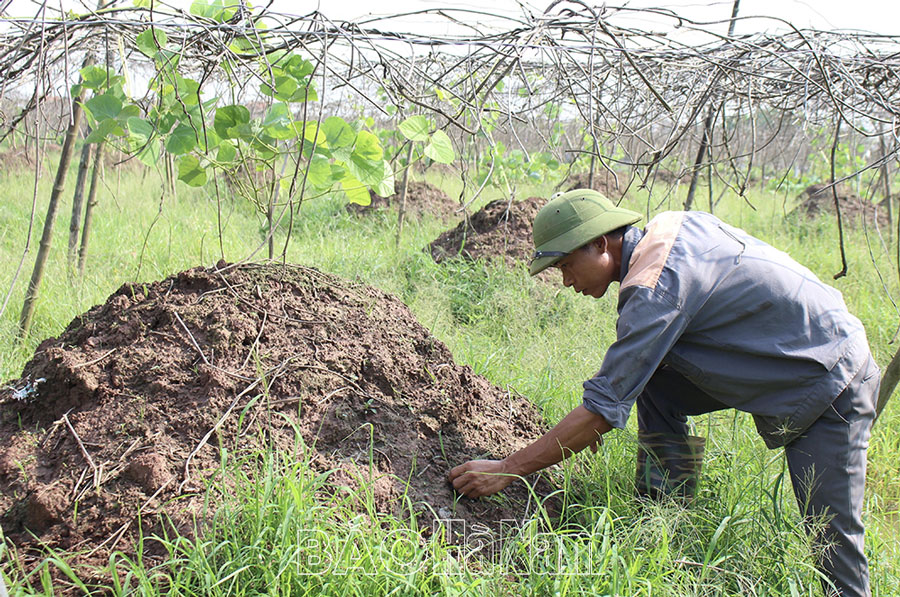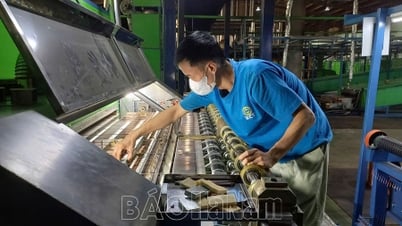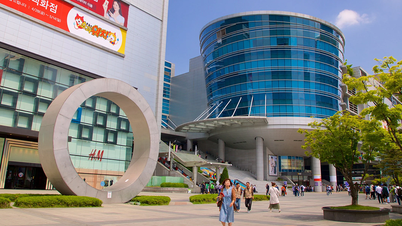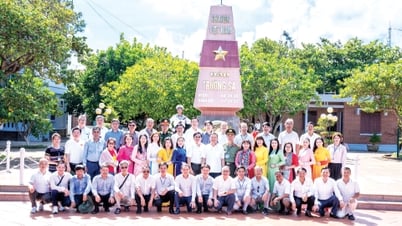From barren lands, where cultivation is difficult and ineffective, many households in Tien Hai commune, Phu Ly city have boldly planted cassava. And this plant has helped people have a stable source of income and work.
Taking us to visit the cassava garden of more than 3 hectares, with more than 300 cassava roots, Mr. Ngo Van Truong, Noi Ngoai village shared: Cassava has long been a familiar crop. However, due to small plantings, mainly for family use, the productivity and value are low. In 2020, seeing many areas of land abandoned due to ineffective rice cultivation, I decided to rent land from 30 households in the village, then hired people to clear the grass, rent excavators to prepare the land, build mounds, bury stakes, and install steel trellises to grow cassava with the hope of increasing my family's income.
While working and learning the techniques of planting and caring for cassava from an acquaintance, Mr. Truong initially planted 200 roots. After 10 months, the 200 cassava roots yielded nearly 20 tons of tubers (each root weighed 80 - 100kg). The cassava roots were sold to traders and agricultural processing companies, and after deducting expenses, Mr. Truong earned a profit of about 150 million VND. In the following years, with experience, Mr. Truong planted more densely with 300 - 400 roots, the yield always reaching 30 - 40 tons, with the current selling price of 15 - 20 thousand VND/kg. In addition to selling cassava roots, Mr. Truong also directly produces cassava flour to sell to the market to improve economic efficiency. On average, Mr. Truong's family makes about 1 ton of cassava flour per year. Currently, the price of cassava flour is about 160 thousand VND/kg. After deducting expenses, Mr. Truong earns a profit of over 350 million VND/year.

In Noi Ngoai village, there is also the family of Ms. Ngo Thi Hien, who has been involved in growing cassava for more than ten years. Ms. Hien said: About 4 years ago, I quit my job in the irrigation industry to take over the family's cassava garden with more than 100 roots. Cassava is an easy-to-grow plant, not picky about soil, low investment cost, low care, and few diseases. Because it is a tuber crop, to have high productivity, the steps of building mounds and trellises must be given special attention. Instead of planting in the way people usually do, Ms. Hien builds mounds of soil over 1m high, the soil for growing cassava before being built into a truncated cone shape is mixed with phosphate fertilizer, NPK fertilizer with a dosage of 8-10kg/mound. On top of the mound, bamboo poles and steel wire are used to make trellises for cassava to climb.
According to Ms. Hien's experience, the mound for growing cassava must be large, ensuring the cassava tubers develop, the soil must be new, the looser the tubers will be. The trellis must be large enough for the cassava vines to climb, avoiding the phenomenon of cassava vines on the trellis being too thick, leading to poor photosynthesis. In particular, it is necessary to avoid cassava vines touching the ground, taking root and forming new roots, leading to reduced productivity and poor efficiency. Ms. Hien's family usually plants cassava in the third lunar month, after 9-10 months of harvest. Each crop, Ms. Hien's family harvests about more than 10 tons, after deducting costs, the profit is about more than 100 million VND/year.
Ms. Nguyen Thi Mau, Chairwoman of the Farmers' Association of Tien Hai Commune, said: Currently, there are more than 10 households growing cassava in the commune. In order to increase the value per unit area, in recent years, the People's Committee of Tien Hai Commune has actively implemented the transformation of crop and livestock structure; at the same time, encouraging and creating conditions for organizations and individuals to accumulate and concentrate land for large-scale production. The cassava growing model in the commune is a new direction, bringing high economic efficiency. In the coming time, the commune will create all conditions to support the replication of this model.
Bui Linh
Source: https://baohanam.com.vn/kinh-te/nong-nghiep/trong-san-day-dem-lai-hieu-qua-kinh-te-cao-139579.html




































































































Comment (0)